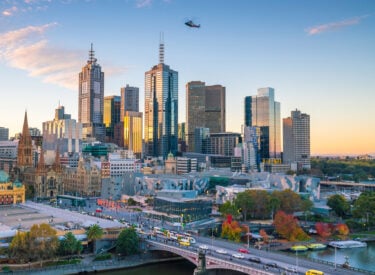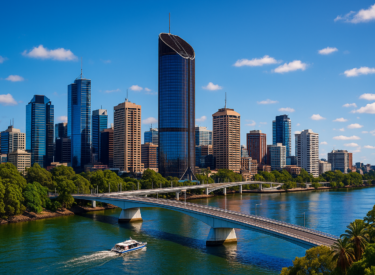
Key takeaways
The Reserve Bank of Australia (RBA) is keeping options open for both potential rate cuts and hikes depending on how the economy performs. It may cut rates if economic conditions worsen but could raise them if inflation doesn’t ease sufficiently.
Although inflation has shown signs of cooling, the RBA remains cautious. A key risk factor is if households increase spending following Stage 3 tax cuts, which could keep inflation elevated.
Many analysts, including Australia’s largest home lender, believe a rate cut could occur by year-end or early next year. However, the RBA’s cautious tone suggests they may hold off, to prevent a surge in spending that could rekindle inflation.
If rates are cut, it would likely increase borrowing capacity, stimulating demand and pushing house prices higher. Historically, a 1% interest rate cut can boost borrowing capacity by about 10%, making property more accessible and fueling market growth.
or property investors, current conditions offer a potential window of opportunity. As interest rates eventually drop, markets are expected to enter a new growth phase, making this a prime time for long-term-focused buyers.
In a recent move that signals a flexible but cautious approach, the Reserve Bank of Australia has kept the door open for potential interest rate cuts by year-end if economic conditions worsen.
In its minutes for the September Board meeting, the RBA has also cautioned that it could raise rates again should inflation fail to show sustainable movement towards the target range.
In other words, the RBA is 'having a bet each way' on the future of interest rates.
This nuanced stance reflects the central bank’s struggle to strike a balance between fostering economic growth and containing inflationary pressures.

Understanding the RBA's dilemma
The RBA’s actions illustrate its delicate balancing act.
On one hand, the potential for an interest rate cut suggests a willingness to support a slowing economy and provide relief for households and businesses under financial strain.
On the other hand, the central bank is mindful of the persistent inflationary pressures.
The minutes revealed that Governor Michele Bullock and her board discussed the scenarios that would lead them to another rate increase.
One of those would be if households spend the bulk of the extra income generated by the stage 3 tax cuts, therefore keeping inflation higher for longer, or if supply and productivity in the economy are worse than expected.
Clearly, while inflation has shown signs of cooling in recent months, the RBA remains vigilant.
Achieving the target range remains paramount to ensure that inflation does not erode the purchasing power of everyday Australians.
Therefore, the RBA’s dual message suggests that any interest rate cut will only materialise if the economy shows clear signs of deceleration and inflation appears likely to remain under control.
Having said that, the “money market” is counting on an interest rate cut before the end of the year and Australia’s largest home lender, the Commonwealth Bank also believes that the first interest rate cut will occur this year.
Our other big banks are forecasting a rate cut early next year.
While obviously, the Reserve Bank has to consider all possibilities, in my mind it's unlikely that the interest rates will rise again and this is more likely the Reserve Bank “jawboning” warning people not to start expecting an interest rate drop
Anytime soon, as this would only encourage more spending and borrowing which would lead to inflationary pressures.

What does this mean for property investors?
With talk of rate cuts on the horizon, many are wondering how this would affect house prices.
A cut in interest rates has a ripple effect that extends far beyond just making mortgages cheaper.
Lower rates reduce borrowing costs, allowing buyers to take on bigger loans.
This increased borrowing capacity typically leads to a surge in demand, as buyers have more funds at their disposal and are eager to act before prices rise further.
When interest rates fall, the lower cost of borrowing means buyers can stretch their budgets a little further, which usually pushes up house prices as people compete for properties they may not have been able to afford previously.
In fact, the last few times the Reserve Bank of Australia lowered interest rates, we saw house prices rise significantly.
Historically, a 1% reduction in interest rates can potentially increase borrowing capacity by about 10%.
This means that currently, our property markets offer a window of opportunity for homebuyers and investors with a long-term focus as eventually, interest rates will fall in the property markets will move to the next stage of the cycle.













